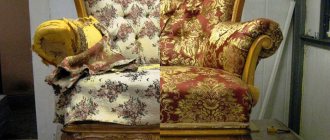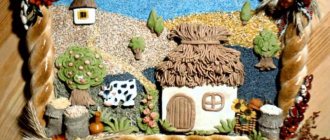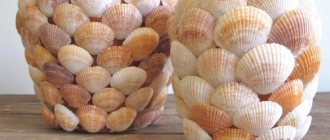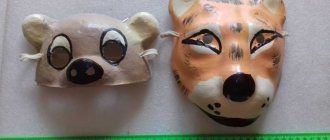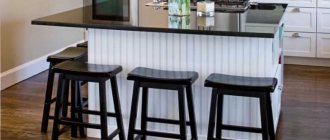To create a cozy atmosphere in the kitchen, you need to decorate the room with handmade crafts. Not only experienced needlewomen, but also anyone who wants to make unique crafts for the kitchen with their own hands can transform the familiar atmosphere in the house. Decor ideas will inspire you to create extraordinary kitchen accessories that match any aesthetic tastes of the home owners.
Your own crafts will add a unique personality to the interior of your kitchen.
Textile products
There are always scraps, fabric scraps or out-of-fashion clothes left around the house. They will be useful for making crafts for the kitchen with your own hands:
- Potholders;
- Unusual dolls for a teapot;
- Elegant tablecloths and napkins;
- Applications on curtains;
- Bags for vegetables.
The mitten is sewn to the size of your palm, putting a seal inside. Of course, such an accessory can be bought inexpensively in a store, but an exclusive model cannot be compared to a purchased product.
The presence of covers on chairs will advantageously domesticate the atmosphere. In Provence, chintz or satin with small flowers and delicate shades are suitable for these purposes, and flowing fabric with gold and silver monograms corresponds to the classics.
The stools are also refined by removing the pattern and adding an allowance of 10 cm. An elastic band is inserted into the hem of the resulting square, which is pulled together from below. Ruffles, lace, bows and contrasting ribbons sewn onto the edges will give the furniture an attractive, flirty look. You can also use bright decorative pillows to make the seats more comfortable.
Ideas for crafts for the kitchen sometimes include the most unexpected things, for example, a beautiful mug without a bottom is boldly used as a curtain holder.
Decor of ceramics and glass products
At home, without special equipment, it is almost impossible to make ceramic dishes, much less glass vases, on your own. But you can easily decorate them using the samples in the photo.
The most popular techniques are:
- decoupage;
- stained glass;
- painting with acrylic paints.
Any dishes without a pattern, preferably white, are suitable for decoration. Glass vases, plates and bowls, as well as glass kitchen facades, can be decorated with your own hands using the stained glass technique, painted with special stained glass paints. White porcelain will decorate with acrylic painting in any style you like.
Topiary
Such an exquisite item is always appropriate in the kitchen; its crown can be decorated with any details, these could be:
- Flowers.
- Candies.
- Cones.
- Peas, beans.
- Coffee.
Elements are glued to the painted foam ball, filling the voids with small fractions, beads, sparkles, and buttons. Having inserted a stick-trunk into the hole, the sample is placed in a pot with floral foam or alabaster, decorating it with greenery.
Panels made of cereals and coffee beans - landscapes, still lifes, abstractions and figures - also look great.
Curtains as an important part of the interior
Kitchen textiles, which are an integral part of the room, are considered an object that allows you to realize your own creative potential. By approaching this process with soul and implementing creative ideas, an author’s unique creation is created, delighting with its splendor and individuality. Sewing curtains for the kitchen is not difficult at all and no special preparation is required. Made with your own hands, curtains with ties will turn your kitchen into a model of originality and originality. The laces for it are made of similar fabric or contrasting shades.
Sequencing:
- Decide on the length of the curtains. Measure the height from the curtain to the floor, subtract 2 cm from the resulting measurements and subtract the length of the ties. This will give you the final number.
- When cutting fabric with your own hands, it is important to take your time and take the measurements correctly. The hem seam at the bottom will be 10 cm, the size of the lining seam will be 5 cm.
- The width of the ties is chosen arbitrarily. Evenly distribute the same amount for each of the curtains.
- Cut out the tie blanks, secure with pins and try on the barbell. Do not forget about 2 cm allowances, cut off unnecessary parts.
- Hand-cut parts consist of two parts: the main fabric and the lining.
- The wrong side of the pieces are connected to each other and stitched together. Then they twist it out and iron it with an iron.
- Take the curtain, prepare the outer side of the tie and connect it to the untreated part.
- Lightly bait, then sew the edges using a machine with your own hands.
- The resulting seam is ironed.
- The untreated part of the curtain is folded from the wrong side and sewn along the markings.
An independent creation will become a unique object in the kitchen, updating and transforming its decor.
Baskets
Bread, fruits, eggs and other products are kept in wicker containers. Crafts for the kitchen made from newspaper tubes are as strong as baskets made from wicker. Step-by-step instruction:
- The newspaper is twisted around a pencil or wire, creating a long tube fixed with glue;
- At least 30 copies are made this way;
- Painted in any color;
- Weaving begins from the bottom, folding the samples into a lattice and running one strip horizontally around the vertical posts, gluing the ending strips.
It is easier to braid an object, removing it after finishing the work. Such a creation can be made from bulky rope.
Crafts for storing something
Boxes are considered the most convenient storage option. They are roomy and at the same time compact, they are convenient to stack on top of each other. Homemade trays made from sheets of plywood and textiles are not inferior in ergonomics, as they organize items well into categories. Several more storage options will appear thanks to containers and baskets. Products are woven from any materials, according to simple patterns and in a short time. Housewives not only weave, but also sew. This is how they make pockets for vegetables and fruits. They turn old bags into anything, not only into storage space, but also into pots and decor. Hanging storage systems, baskets, and bottle covers are made from ropes. In turn, containers, as well as jars, are converted into pepper shakers, salt shakers, etc. Cellular storage systems are also assembled from them. Jars are attached vertically, horizontally, and even upside down with the lids closed.
Cutlery organizer
You will need a sheet of plywood the size of the kitchen drawer and the length of the cutlery, with a thickness of 5 to 10 mm. We cut out a fragment from the blank so that it matches the parameters of the furniture. We place kitchen utensils on the resulting figure: spoons, forks, etc. separately. We determine convenient boundaries for the blocks and leave 10 mm for each of them. We will then place the sides along the lines. To cut the base fragment, use a stationery knife (if the sheet thickness is about 5 mm). We cut the thicker blank for the sides with a circular saw. The partitions and outer edges are “set” with adhesive. We drive thin nails into the ends. We install posts in the four inner corners around the perimeter for strengthening and decorative purposes. Rounded parts with parameters 60×10×10 mm are suitable. After gluing the last element, you will need to wait another hour before using the organizer.
Wicker baskets
Baskets are made from wicker, twine, veneer, rope and paper. Veneer wicker, for example, is assembled using the checkerboard method. The material is pre-soaked in water at room temperature. The wet veneer is hung to dry. When the moisture has completely disappeared, the material is cut into strips of 1 or 2 cm, approximately the same. At the same time, slight carelessness, discrepancy in width and slightly wavy edges will contribute to the aesthetics of the product. The first half of the strips are placed on the table and secured with adhesive tape. After this, transverse sections are woven - one at a time. All paired ones are under three longitudinal ones, and unpaired ones are under four – or vice versa. When the wicker figure has the outline of a square, it begins to be bent. At this moment, check the bend on each side. Most likely, one of them will have more visual defects, and it is better to hide it. The strips are folded so that they maintain a vertical position. Then the remaining strips are woven into the walls, and the already woven protruding fragments are carefully wrapped.
Jars for storing spices and bulk products
Containers for spices are made from ordinary glass containers and lids with slots. Seasonings are sometimes stored in open jars. Original homemade products are made from raw materials, and this requires minimal drawing skills. First of all, wash the glass surface. Then we wipe it with alcohol and apply paint: on open glass or in shapes on a stencil. In the second case, the background will be empty, but it can be completed with slow, controlled movements. The most beautiful drawings are made with stained glass paints. Another decoration option involves gluing tape. First, measure the required amount of strip by wrapping it around the jar. We cut off the required piece and divide it into segments around the circumference of the jar. Lubricate the inside of the strips with PVA glue. Glue them one by one to the glass and carefully smooth them out. We overlap the edges of each individual fragment. We decorate the coating with sparkles or a small pattern.
Bags and pockets for storing vegetables
Something similar to vertical systems with pockets for flowers is also used for storing vegetables and fruits. Colored storage units look modern and stylish, while transparent ones are more practical. Products are also kept in eco-bags and eco-bags. Waterproof sealed bags are made for tomatoes. Dirty vegetables like carrots are stored in raincoat pockets. For legumes, cotton beans are usually chosen. Cucumbers, cabbage, etc. are placed in products made from linings, tulle, organza, tulle, chiffon, and sports mesh. The first step is to determine the size of the pockets and prepare the pattern. Afterwards, the parts are cut out in the required quantity and the side sections are connected with a double seam. The rectangles are folded, and the side seams are basted or chipped. They are ground 0.3-0.4 mm from the cuts. On one side they do not reach the top and leave a 3 cm margin. After this, the bag is sewn and the drawstring is processed.
Non-standard ideas
The room needs many devices that make the cook’s work easier and relieve the workspace. To do this, use old utensils in the form of forks and spoons, bent with a hook, clothespins mounted to the wall to hold towels.
You can free up the tabletop with glass jars whose lids are screwed to the bottom of the hanging cabinet. This is an excellent storage for spices, sugar, and groceries.
An organizer made from tin cans will accommodate spatulas, ladle, tools, and brushes. DIY kitchen crafts master class:
- The required number of containers are painted in the desired color and dried.
- Using a nail, holes are made in the side for further attachment to the board.
- Self-tapping screws are used to screw the workpieces to the base.
- Leather or furniture handles are attached to the top for easy transportation to any point.
The modifications are different; they are decorated with jute, signs, painted in attractive colors, and hung on the wall. Knives can be kept in original stands filled with bamboo skewers, spaghetti, and bulk mixtures.
The rake will act as a pendant for glasses, and unnecessary graters will act as lampshades or containers for small items.
Needlewomen knit colorful coasters for hot dishes, but in the absence of this skill, accessories are made from jute rope, twisted in a circle, wine corks, glued in any configuration and attached to a base, for example, a compact disc. A cork picture looks good, to which photographs and notes are pinned.
You can lay out the letters using the herringbone laying technique in rows.
What style should you use to make crafts?
The kitchen interior is characterized by high surface congestion. Open storage systems perform a decorative function: cutlery, dishes and other kitchen utensils are visible, so their style should be coordinated. But it is not necessary to follow the interior design. Crafts in the Provence, Greek, Art Nouveau, Victorian, and Baroque styles look appropriate in any kitchen. The Greek style is clay objects, wood, meanders and patterns, mythological drawings, flowers. Crafts in this style feature the listed motifs. Provincial style is expressed in old-fashioned design, the presence of ceramics, whitened colors, and hand-drawn drawings. Baroque, Art Nouveau and Victorian styles are similar due to their desire for expensive decoration. Crafts are made from valuable wood, carvings, stones, and gilding are added. Baroque style is characterized by light colors. The range of Victorian and modernist movements is much darker.
Wooden masterpieces
Crafts for the kitchen made of wood are offered in a wide variety. An ordinary board will appear as a serving tray on which snacks and drinks are served; it can be decorated at your own discretion by attaching handles. Candlesticks on unusual driftwood and candles surrounded with sticks will add a romantic mood.
An owl on a wooden cut looks unusual, its nose is a spoon, its legs are forks, and its eyes are tin bottle caps. Craftsmen create real works of art by firing and cutting. Dried flowers, ears of corn, and burlap are perfectly combined with wood.
Ideas for decorating and storing kitchen utensils
Decorating storage accessories is another interesting idea for decorating the kitchen.:
- It’s easy to make a box for storing kitchen towels or napkins from a simple cardboard box. It is pasted over or covered with fabric outside and inside, decorated with ribbons, lace or appliqué.
- Wicker baskets for small items are made from newspaper wicker and painted with acrylic paint in the chosen color. They are convenient for storing small kitchen utensils.
- Those who know how to hold a hammer in their hands make wooden crafts for the kitchen. Simple wooden shelves will not only add a rustic feel, but will also provide additional storage space for kitchen utensils or bulk products. The shelves are sanded and painted or left with the natural texture of wood if it suits the style of the kitchen.
Wall decorations
Emphasis with expressive strokes is done:
- stickers and stencils;
- artistic painting;
- panel
The theme is represented by butterflies, floral variations, delicious fruits and berries. Place for cute images is given on the apron in the dining area. They recreate mosaic pictures using natural materials.
Most often they operate with shells, cutlery, and pasta. The room will be enlivened by potted plants, vegetable dummies, and bundles of onions and garlic.
It should be noted that a small room cannot be overloaded with decor; a few elements arranged vertically are enough.
Photos of kitchen crafts demonstrate that a catchy and functional attribute of the interior is a clock, which is constructed independently from painted plates, cardboard, frying pans, drilling a hole in the middle for the clock mechanism.
Chalk wallpaper is a chance for both adults and children to try themselves as artists every day. You can stylishly decorate your refrigerator, range hood and old furniture, breathing new life into them.
Features of DIY kitchen decor
In addition to the design aspect, which states that crafts should be purchased in a style that matches the decor, there are also clear requirements for the items placed. In the kitchen, only environmentally friendly decor is used that is resistant to external factors or treated to impart such properties. In the kitchen, all products are exposed to temperature contrasts, moisture, and steam. Drops of fat fall on them. It should be understood that many crafts will not fit in the kitchen, and that the finishing that already exists should not be damaged. The most suitable places for placing decor are the kitchen table, free wall, window sill and furniture facades. You can decorate almost any surface with stickers; most of them can be painted. But whether to screw individual parts to furniture and walls or not is a more complicated question. Whatever the decor, durability and the ability to be easily cleaned are important.
Main advantages:
- Minimum expenses;
- Non-standard solutions;
- Options for a specific interior;
- Possibility of using unnecessary things.
Metamorphoses with bottles
Glass bottles are replenished with multi-colored grocery products, giving them a non-trivial appearance. If you paint them, after removing the labels and degreasing them with alcohol, you will get delightful vases that can be trimmed to the desired format.
To do this, the thread is soaked in a flammable liquid, wrapped in the required place and set on fire, after which it is sharply lowered into boiling water, and then into ice water. The temperature difference will cause a crack. Having broken off the neck, the cut is treated with sandpaper.
The bottles are dressed up in knitted clothes and finished using decoupage technique.
Depending on the time of year, the atmosphere changes, the autumn note is emphasized by a herbarium, dry ikebana, and spring is greeted with vases of primroses.
Free time spent doing needlework brings a lot of positive emotions. Crafts for kitchen decor are a source of positive mood, bestowing warmth and soulfulness on household members.
Pottery decor
Large, bright windows with wide window sills can be decorated with house plants in clay pots, decorated in the style of the kitchen.
If the kitchen is in art deco style, crochet a bright belt with a geometric pattern for each pot. The ornament can be the same for everyone or individual.
A country-style kitchen is decorated with French flower pots . They use the same decoupage technique, but instead of napkins they use black and white vintage drawings and inscriptions, for example, old signs of French haberdashery stores.
Large flower pots are primed with white acrylic and allowed to dry. The printouts are carefully cut out, the front surface is thickly coated with PVA glue and glued to the pots with the front side. Allow it to dry for one day, after which, armed with a damp sponge, moisten the drawing and carefully remove the layer of paper from it, gradually exposing the drawing. After this, everything is fixed with acrylic varnish.
Painting pottery is accessible not only to those who know how to paint , but also to those who have never held brushes in their hands. For beautiful painting, you can use a special stencil. Acrylic paints are suitable - they are bright, rich and non-toxic.
Advice. Work with layers of acrylic paints is best secured under several layers of acrylic varnish for the strength and durability of the art product.
Photos of crafts for the kitchen
Decorating the chairs
You can sew almost any fabric item with your own hands in the kitchen. So, to decorate kitchen chairs, pillows are often used in a variety of shapes, sizes and internal fillings.
What attributes are required for the job?
- cotton fabric;
- any internal dense fabric;
- large sheet of paper;
- pencil;
- satin ribbon.
First of all, make a pattern with your own hands. Place a prepared piece of paper on a chair and trace its edge with a pencil. Using the prepared pattern, cut out 2 pieces of fabric, leaving 2 cm allowances on each side. Then the edges are sewn with a machine and stuffed with prepared filling. The seams are stitched. So, the pillow for the kitchen is ready, now you can decorate it with any interesting fabric - lace, satin ribbons. The pillow is tied to the chair with stitched ties.
